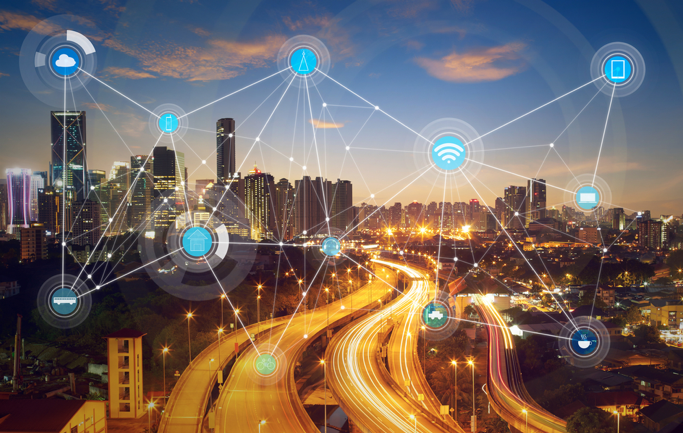 My tenure as a Global Black Belt for Microsoft Azure IoT has flown by. It’s also seen numerous, surprising changes in IoT. Had you asked me to wager three years ago that customers of mine, many of whom back then were surprised to hear Microsoft even focused on IoT, would today be starting one IoT project on Azure after another – I probably would not have taken that bet. Those early days were filled with companies just testing the waters of IoT, wary and unsure whether or how to proceed. Luckily for you and I, that’s changed.
My tenure as a Global Black Belt for Microsoft Azure IoT has flown by. It’s also seen numerous, surprising changes in IoT. Had you asked me to wager three years ago that customers of mine, many of whom back then were surprised to hear Microsoft even focused on IoT, would today be starting one IoT project on Azure after another – I probably would not have taken that bet. Those early days were filled with companies just testing the waters of IoT, wary and unsure whether or how to proceed. Luckily for you and I, that’s changed.
Though the reasons may be complex, the current state of IoT today is simple to describe – it’s on fire. The management firm Bain reported breathlessly this month that Industrial IoT (IIoT) alone will grow to be a $200B market by 2021. Gartner predicts 80B connected “things” by 2025 generating 180ZB of data (one zettabyte (ZB) = one million petabytes), which is typically the sort of unhinged tech hyperbole we mentally skip right past. But, if you stop to consider it a moment, while those numbers are nuts, they’re also probably pretty accurate because, the truth is, companies are doubling down on IoT. And why they’re doubling down is worth exploring.
If Data’s the New Oil, You Might Want to Start Selling the Drilling Equipment
To be sure, you’ve heard this ‘data is the new oil’ trope from smarter people than myself. With the evolution and democratization of technologies to store vast amounts of data and ring ever more amazing insights from it, data’s become king, literally. Fortunes made, new industries established, the world shifted from its axis, all, by massive, mega-metric piles of good ole’ data.
My chief complaint - and here I’ll pair a confession with a rant – I’ve never liked the word ‘data.’ It’s a boorish, digital leftover from a time filled with floppy disks we’re well past. A better word for what we’re talking about is ‘reality.’ Or perhaps, our understanding of reality. Data isn’t interesting. Knowing is interesting.
When I sit down to talk to a customer about IoT, I know we’re not there to talk about IoT. We’re there to talk about how their organization can better understand and impact what’s going on in their business. That isn’t to say they don’t know what’s going on – or better put, what went on – they’ve got 1-day, 1-week, 1-month old reports that tell them that just fine. What they’re interested in is what’s happening now, or even better – what’s going to happen. And for that, they’ll need an entirely new set of tools and the smart folks to make them work together, which oh btw is still pretty hard.
Enter: Aruba, Microsoft, and You and I.
It remains enticing to conceive of IoT only as small computing devices. Had I a dollar for every Information Technology professional who hears the word IoT and immediately thinks of a small device like a Raspberry Pi, I’d be flying to Aruba Atmosphere in my own jet. In reality, IoT is ultimately about two things: 1) access, and 2) ability. IoT enables new access to difficult-to-obtain information to understand reality in new ways and interact with it. Whether that’s using a $5 temperature sensor or a $5M manufacturing machine matters little - it’s all IoT.
But enabling new access and abilities to new parts of a business opens a Pandora’s Box of challenges. The most significant of these, of course, is security. IoT adds a new digital threat surface which often companies have no experience with, and which can stop their IoT projects cold and create significant risks to their business.
Critically, Aruba’s IoT capabilities enable companies a lifeline out of this morass, providing them a secure access and management layer for IoT devices, regardless of their size or complexity. Your knowledge and experience as a customer or partner of Aruba provides incredible value in enabling all kinds of IoT projects. My point here being: you’re money and you don’t even know it.
The second challenge is where and how to analyze the treasure trove of information IoT gives you, and to decide how to act on it. It’s here that Microsoft Azure’s rich suite of IoT and Analytical services come into play. Microsoft’s fundamental vision in IoT (and the $5B it’s investing to back it up) is focused on helping customers fundamentally address all the different parts of an end-to-end IoT solution. Whether it’s Microsoft’s edge-based computer platform IoT Edge, our software-as-a-service device platform IoT Central, or one of our most compelling new IoT services, Azure Digital Twin, Microsoft is delivering the key building blocks of IoT at a rapid tempo.
How to Eat the IoT Elephant
Perhaps the greatest challenge I see in IoT, beyond the obvious technical and business blockers, is simply one of individual and organizational vision. IoT, like so many other examples of cutting edge tech, demands of us to envision a world for our business that does not yet exist. To do something fundamentally new. To change and to evolve. That’s neither easy for individuals or organizations.
While the expression “the Art of the Possible” is often overused, it turns out often to be just the right starting place in IoT. Even when I work with customers that have a well-defined plan for an IoT project, I encourage them to dream big while they execute tactically. Such envisioning can be powerfully strengthened by focusing on quick, incremental wins in the context of a short pilot or proof-of-concept.
Reaching out to your Microsoft Account Team or Aruba contacts can be a great step to start the process of creating just such a plan of action, and critically, to fully understand what we have to offer. Another good one: Come to my session on Wednesday, April 3rd, at Aruba Atmosphere!




